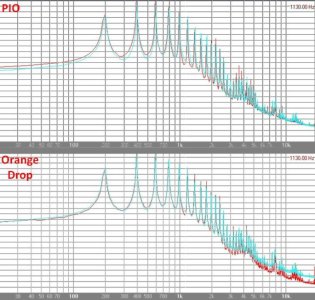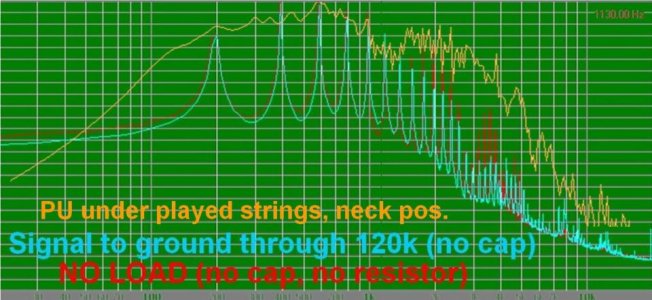To me, Pio sounds silkier and more vintage, while orange drop sounds fatter and more supple.
Que the hordes that think no way can different materials sound differently.
I've also heard some here say about ceramic disk caps being more prone to certain issues, but I don't remember well enough to repeat it here
Years ago I made a little breakout box to test all these internet theories about how different caps sound different. I also just tested some various caps with alligator clips outside the guitar (which is how I started before I decided I needed to make a formal test rig). I put a variety of different caps (ceramic, polypropylene, paper in oil, etc.) on a rotary switch. I measured each cap and picked ones that were within ~1-2% tolerance of each other or so, but I measured down to 4 decimal places to assess if even that much value difference contributed to the sound. Below is the 250k Fender .047uF tone box I made, I also did Gibson 500k .022uF version.
What I found is that if the caps measured the exact same, there was no difference in sound. If the cap value was higher, then the rolloff was darker, if the cap value was low, then the rolloff was less effective (basically the corner frequency was higher so it didn't get as dark).
The one exception was little cheap ceramic disc caps. Those never gave me a consistent reading on their cap value, the value kept moving high or low on the meter, and subsequently, in circuit, they sounded murky and unclear, whereas any other cap, even though it rolled off highs, you could still hear all the notes clearly through the sound - like holding your hand over a high-quality speaker, you can hear everything clearly, it's just darkened or filtered. So I would recommend avoiding really cheap little ceramic discs, but other than that, you could use any cap type (polypropylene, paper in oil, ceramic, etc.) and get the same sound as long as the cap measures the exact correct value. The only other consideration is stability, like the issue PIO has with drying out which no other cap type has.




